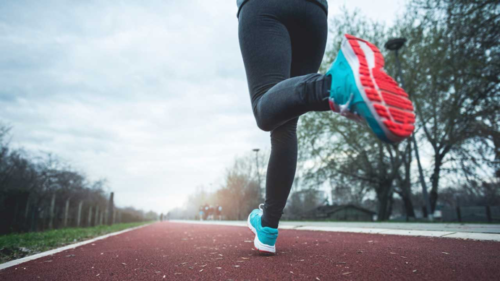
Tips for Injury-Free Running
 By: Mackenzie Merritt, Registered Physiotherapist
By: Mackenzie Merritt, Registered Physiotherapist
Running is one of the most popular physical activities performed around the world. It is a great way to stay fit and improve your cardiovascular health, but it can be taxing on your muscles and joints. The good news is most running related injuries are preventable with proper preparation and awareness. Whether you are new to running or an experienced pro, a 5 km speedster or a slow and steady marathoner, these tips are important to consider and will help keep your wheels rolling for years to come.
Progression
One of the best ways to avoid running injuries is to progress your distance, speed, and frequency appropriately. Our bodies are phenomenal at adapting to the physical stresses we place upon them, but this process takes time and consistency. Generally, starting slowly is best, and give yourself plenty of time to rest and recover. When running a certain distance becomes less tiring and you don’t experience soreness the next day, that's a good sign you're ready to progress. You can try running a little further, running the same distance faster, or running more often. The rate at which you should progress depends on many factors such as your general fitness, running history, lifestyle demands and diet. If you're unsure, speak with an expert, such as a physiotherapist, to guide you.
Warm up/Cool down
Running is a high intensity form of exercise and requires you to use numerous muscle groups and energy systems for long periods of time. To prepare your body for this, a proper warm-up routine is required. A dynamic warm-up is best and should incorporate active movements (as opposed to static holds) of your back, hips, knees and ankles. Cooling down after a run is equally important. Light walking works well to allow your heart rate to decrease while promoting circulation to clear out waste products in your muscles. This can be followed by some static stretches for the shin muscles, glutes, calves, quads and hamstrings.
Style
There are many theories circulating on which running style or “gait” is the best for preventing injury. Running gait can depend on factors including your body type, muscle strength, mobility, level of training, and personal goals. Certain gaits are more efficient than others and place less stress on muscles that are commonly overused. For example, excessive heel striking (landing heel first) and overstriding (landing too far in front of your body) will typically increase your risk of sustaining an overuse injury. Generally speaking, most running gait problems can be corrected by increasing your step rate or “cadence”. Ideal cadence for efficiency and injury prevention is around 180 steps/minute but most recreational runners are around 140-160 steps/minute. It takes time and practice to build up!
If you’re experiencing discomfort while running or concerned about injury risk, having your running gait assessed by a knowledgeable physiotherapist is a great starting point for improvement.
Shoes
Finally, the footwear you choose can also impact your injury risk. Running shoes don't last forever and should be replaced every 6-8 months for frequent runners, depending on how many kms you are racking up. Shoe style is very much dependent on individual preference and experience, but shoes that are designed for running are usually better options than casual sneakers or general cross trainers. New runners tend to do better with more cushion while experienced runners may prefer a more barefoot feel. The most important concerns are that your shoes fit well and are comfortable for you.
Following these tips and listening to your body are great ways to make sure you experience the many benefits running has to offer. Now get out there and run like the wind!
Work with experts in the physiotherapy marketing community today.
 0 Comment
0 Comment 




Leave A Comment